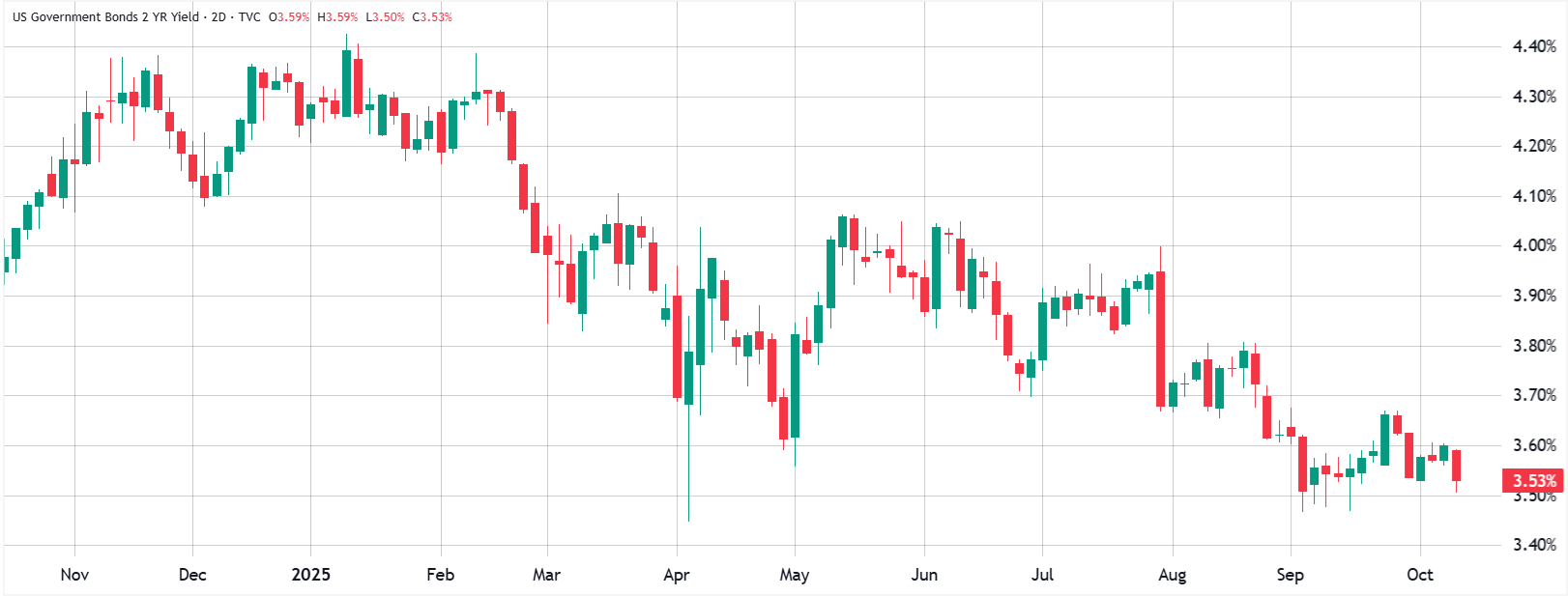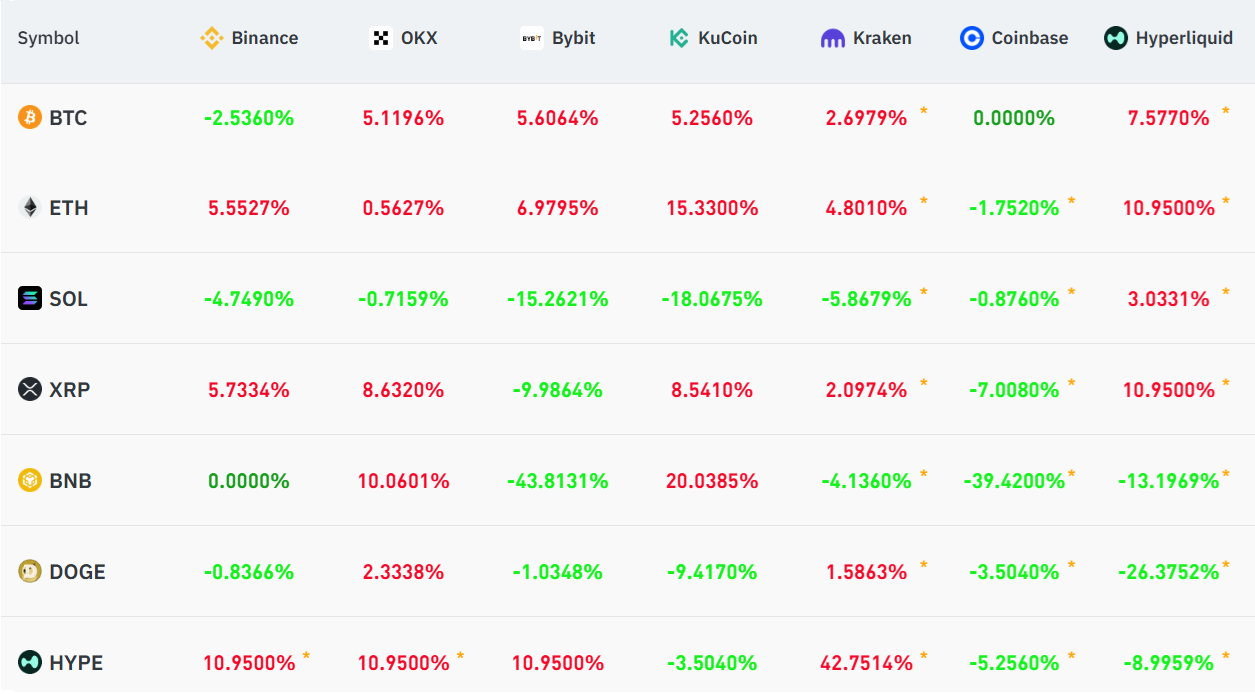
Highlights:
- Bitcoin’s quick recovery following the $19 billion crash points to sustained long-term demand.
- Traders’ wariness persists with recent market shifts indicating increased counterparty risks.
Bitcoin (BTC) bounced back over the $114,000 threshold less than two days after a significant flash crash wiped out $15 billion from BTC futures market. However, several factors could further delay its upcoming challenge of reaching the $125,000 mark.
As investors continue viewing Bitcoin as a speculative asset closely tied with tech stocks, its upward movement may largely depend on improved confidence in global economic stability.
US Job Market and China Relations Affect Bitcoin Prices
Concerns regarding an economic downturn, primarily due to new signs of labor market weakness, have heightened risk aversion among investors. Carlyle reports that US employers added 17,000 jobs in September, a drop from 22,000 in August, according to []The Wall Street Journal.
 US two-year Treasury yield.
US two-year Treasury yield.
Source: TradingView
The demand for US bonds has surged, driving yields near 3.5% as investors opted for lower returns in exchange for the safety of government bonds. The intensifying trade conflict between the US and China could deteriorate further on November 10 when limitations on import tariffs may come to an end.
President Trump noted on Truth Social that an extension should be arranged to support both nations’ economic growth efforts, but technical talks between the leaders haven’t led to substantial announcements yet.
Treasury Secretary Scott Bessent criticized China’s export control measures as provocative. Under these new measures, foreign businesses producing specific materials will require an extra export license, even if not directly associated with Chinese firms. Given that China dominates critical markets for tech manufacturing, the implications are significant.
Macroeconomic uncertainty remains due to the ongoing US government shutdown, delaying the release of critical reports such as consumer inflation and wholesale costs. Such uncertainty complicates the Federal Reserve’s financial outlook, particularly with Fed Chair Jerome Powell’s upcoming address on Tuesday.
Liquidity Concerns in BTC Derivatives and Regulatory Risks
Despite positive signs regarding US-China talks, traders have adopted a cautionary stance towards Bitcoin derivatives. Certain markets still display arbitrage opportunities stemming from discrepancies between perpetual contracts and spot pricing on the same platform, with decreased activity from market makers signifying a rise in counterparty risk.
 Annualized funding rate on Bitcoin and altcoins.
Annualized funding rate on Bitcoin and altcoins.
Source: CoinGlass
At Binance, the funding rate for Bitcoin perpetual futures remains negative, indicating that bearish positions are compensating for leverage. Conversely, other exchanges reflect a return to a healthier positive funding span, revealing potential profit-making chances.
 Source: X/
Source: X/
Source: X/joe mc cann*
Joe McCann, CEO of Asymmetric Financial, noted on X that a significant market maker likely faced severe losses during Friday’s incident, which could account for price discrepancies across various exchanges. Even with short-lived behaviors, traders may stay sidelined from the crypto market for an extended duration.
Further criticism has arisen over how exchanges have managed liquidation triggers and derivative pricing. Crypto.com’s CEO Kris Marszalek urged that regulators need to thoroughly examine the equity of trading practices as issues such as platform downtimes have selectively affected specific users, highlighting gaps in regulatory compliance.
Bitcoin’s distinctive characteristics, allowing it to thrive amid rising demand for independent assets, were unscathed by last Friday’s flash crash. However, traders appear less eager to take risks in the short term, which could significantly postpone the pursuit of another new all-time peak.
This article provides general insights and should not be interpreted as legal or investment advice.



